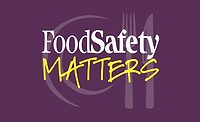Nanoencapsulated Food Additives: Making a Big Difference

Over the last several decades, the development of nanoencapsulated food additives and their utilization in enhancing the safety and nutritional status of food matrices transfigured the food sector. Food additives are well known for their functional activities as antioxidants, antimicrobials, colorants, flavorings, etc. However, these food additives are being replaced by nanoencapsulated additives, in light of the changing perception related to their nutrition and safety profiles. Manipulating food additives at the nanometer level can affect the bioavailability and nutritional value of food on the basis of the functions of the additives. Hence, this strategy will enhance the bioavailability of major health-promoting compounds.
Considering the current uncertainties in relation to the potential risks from nanotechnology applications for food, knowledge gaps, and concerns, there is a need for a proactive approach to address some of the unknowns through research, discussion with key stakeholders, and appropriate revision of regulations to manage the potential risks. It would, however, need a substantial amount of basic research to generate data on the food nanostructures and nanoparticles to enable adequate assessment of risks to an average consumer of nanofoods.
Different Nano-Formulated Matrices Are Available for the Preparation of Nanoencapsulated Food Additives
The opportunities and advantages of nanotechnology are expanding rapidly in food science. Its impact and application in food have attracted great attention from the food nutraceutical and preservation sector. The use of nanotechnology has already introduced modern methods and tools for controlling structures; value-added properties are expected to be featured in new foods. Antioxidants, antimicrobials, colorants, flavorings, and food preservatives are a few functional additives with varying molecular and physical structures. However, they are rarely utilized in their pure form; instead, they are usually applied as coatings or incorporated into a nanoscale formulation (encapsulation systems). For this purpose, several nanoscale matrices have been formulated, including nanoemulsions, liposomes, nanoparticles, and nanofibers. Nanoemulsions are the most frequently used nanostructures in the fortification, enrichment, and preservation of food matrix.
Nanoemulsions are nanoscale oil-in-water or water-in-oil dispersions of a combination of water, oil, and emulsifier. Because of their characteristic size, nanoemulsions appear translucent or transparent to the naked eye; due to this property, nanoemulsions are receiving more attention in the food industry, especially the beverage industry, due to their potential use in clear beverages and fortified drinks. Generally nanoemulsions are nontoxic, nonirritating when formulated with oil, and are approved as Generally Recognized as Safe for human consumption by the U.S. Food and Drug Administration.
Safety and Toxicity of Nanoencapsulated Food Additives
Nanotechnology has significant nutritional science applications in nanodelivery systems, packaging, food safety, and food security. However, there have been considerable issues regarding the use of nanostructures in the food sector, including their uncontrolled interactions with various food components, and their electrostatic repulsion, degradation, and bioaccumulation. In the future, it is obvious that nanotechnology will play a pivotal role in two main areas of food processing: food packaging and food ingredients/additives. Currently, few systematic studies have been carried out that specifically address the potential toxicity of nanoencapsulated food additives that might be present in foods and beverages.
All food additives undergo a safety assessment that may be used in the manufacture or preparation of foodstuffs. The safety evaluation of a nanoencapsulated food additive involves examination of its chemical structure and characteristics, including its specifications, impurities, and potential breakdown products. Toxicological data are essential for the identification and characterization of the possible health hazards of an additive and for an extrapolation of animal data. Current scientific regulation on the use of nanoencapsulated food additives is characterized by numerous uncertainties regarding risk characteristics. It is recognized that the biological properties (including toxicological effects) of nanoencapsulated food additives are largely dependent on their physicochemical parameters.
The exposure of nanostructures used in food production might occur at three main stages of the product cycle. The first is in the preparation of the product: the occupational exposure of the workers making the product. This is possible, indeed likely, unless precautions are taken. Exposure could occur during the production of the nanomaterial or during its incorporation into the final food products. The problem here is one of occupational hygiene. Exposure during product use is less likely, but exposure as a result of product disposal is possible and a cause of some concern. Nanomaterials may be disposed of in landfills; as the products break down, nanomaterials may be released into water courses. Burning may also release nanomaterials. Concerns about the possible asbestos-like properties of nanotubes have led to guidelines that these materials should be treated as if they were, in fact, asbestos. This will impose strict requirements on those dealing with the disposal of such materials. The challenge remains for regulators that the lack of globally accepted rules may ultimately fail to provide appropriate guidance in response to general public and occupational health risks associated with the manufacture, use, and disposal of nanomaterials.
Key points to be considered about toxicity of nanoencapsulated food additives are listed below.
• Increased bioavailability can increase toxic effects at higher concentrations: The hydrophilic nature of lipophilic food additives increases as the particle size decreases. Thus, there may be a higher concentration of soluble lipophilic food additives within the aqueous environment of the gastrointestinal fluids, which facilitates adsorption. On the other hand, if a food additive normally has a very low bioavailability, but its absorption by the human body is increased substantially via nanonization, then it could exhibit toxic effects that could not be predicted from data obtained on the same material in microscopic or macroscopic form. This is particularly true if the food additive is incorporated into a product that is consumed regularly in large volumes, such as a soft drink or beverage.
• Direct absorption and interference with gastrointestinal tract function: Nondigestible nanoencapsulated food additives such as inorganic metals (silicon oxide and titanium dioxide) and metals (silver) can cross the membranes of epithelial cells and may circulate through the human body, where they may then be metabolized, excreted, or accumulate within certain tissues. At present, there is no evidence that nanoencapsulated food additives fabricated from components that are normally digested within the gastrointestinal tract are absorbed directly into the human body. Nevertheless, if these nanoencapsulated food additives are prepared using indigestible oils (such as flavor oils, mineral oils, or fat replacers) or if they are coated with an indigestible shell (such as dietary fibers or solid particles), then direct absorption could occur. However, it should also be recognized that even indigestible lipid nanoparticles may undergo considerable growth in size due to aggregation (flocculation or coalescence) as they pass through the mouth, stomach, and small intestine. Therefore, the small size, high surface area, and high surface energy of nanoencapsulated sized food additives may lead to effects in the gastrointestinal tract that are not predictable from knowledge of the behavior of microscopic or macroscopic lipids.
• Solvent residuals: The fabrication of nanoencapsulated food additives using some homogenization methods (solvent displacement or evaporation) involves the use of organic solvents, such as acetone, hexane, or ethyl acetate. These organic solvents are usually removed by evaporation during the preparation of the nanoscale food additive, but some residual organic solvent may remain in the final product. It is therefore important to be aware of the potential toxic effects associated with any residual organic solvents if nanoencapsulated food additives are fabricated using these approaches.
Targeting Future Nanoencapsulated Food Additives
Interdisciplinary research will be vital in establishing the potential risks of nanotechnology and controlling them. For example, there is much that can be learned from those areas of medical research looking at the passage of nanoparticles through the gut as a vehicle for targeted drug delivery. Tracking advances in these fields will help highlight processes that could present a possible issue for application of nanotechnologies in foodstuffs.
• Physicochemical properties of nanoscale food additives, their interactions with other food components, and their fate and behavior in the gastrointestinal tract.
• Potential effects of nanoscale food additives on the function of gastrointestinal tract epithelium and other cells, and on the gut natural microflora.
• The extent of changes in the absorption and bioavailability of nanoencapsulated food additives compared to macroscale equivalents, the toxicological significance of such changes, and whether they should lead to a lowering of their permissible limits in food.
• Potential effects of nanoscale food ingredients or additives on the nutrient/metabolite transport in and out of the cell, and whether this could lead to a significant effect on the overall nutrient profile in the body.
• The extent of changes in the composition of foods when processed at nanoscale, and whether they warrant consideration as a novel food.
• Potential changes to the way in which food constituents are digested as a consequence of their nanoscale processing; for example, whether the introduction into foods of engineered nanoparticles designed to carry dietary supplements can also lead to introduction of foreign substances into the blood.
• Potential for indirect contamination of food through migration of nanomaterials from food packaging or active surfaces used in food processing.
Conclusion
The evolution of nanotechnology has changed dramatically over the last decade and a significant focus on nanomaterials and application of nanotechnology has occurred in many areas of science. Nanoscale materials have, of course, always existed, yet have remained largely undiscovered by science until timely scientific breakthroughs allowed us to resolve them. Nanotechnology is expanding rapidly in the food preservation and processing sector. As with all new technologies, benefits will be conferred and risks will be encountered. A contentious, but important, issue is the toxicity of nanostructures. Although there are insufficient data at present to warrant application and appropriate permissible limits that relate to the potential effects of nanoencapsulated food additives, such parameters would play a key role in formulating regulations.
Lohith Kumar DH is a Ph.D. candidate in Food Process Engineering at the National Institute of Technology Rourkela, India.
Resources
www.food.gov.uk/sites/default/files/media/document/432-1-752_A01057_Final_Report_July_2007.pdf.
Carocho, M, et al. 2014. “Adding Molecules to Food, Pros and Cons: A Review on Synthetic and Natural Food Additives.” Compr Rev Food Sci Food Saf 13(4):377–399.
www.intechopen.com/books/food-additive/the-safety-assessment-of-food-additives-by-reproductive-and-developmental-toxicity-studies.
Kumar DH, L and P Sarkar. 2017. “Encapsulation of Bioactive Compounds using Nanoemulsions.” Environ Chem Lett 1-12.
Kumar DH, L and P Sarkar. “Nanoemulsions for Nutrient Delivery in Food.” In Nanoscience in Food and Agriculture 5, Ranjan, S, N Dasgupta, and E Lichtfouse, eds (Springer, 2017), 81-121.
McClements, DJ and J Rao. 2011. “Food-Grade Nanoemulsions: Formulation, Fabrication, Properties, Performance, Biological Fate, and Potential Toxicity.” Crit Rev Food Sci Nutr 51(4): 285–330.
Sarkar, P, et al. 2015. “Traditional and Ayurvedic Foods of Indian Origin.” J Ethnic Foods 2(3): 97–109.
Looking for a reprint of this article?
From high-res PDFs to custom plaques, order your copy today!







